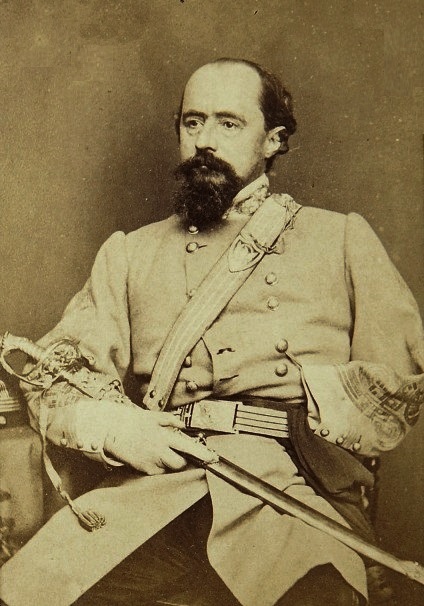|
Loring's Division at Fort Pemberton
(Vicksburg Campaign)
March 12-19, 1863
See A Brief
History of Fort Pemberton, below.
Major General William
Loring
1st
Brigade:
Brigadier General Lloyd Tilghman
54th Alabama Infantry- Colonel A. Baker
8th Kentucky Infantry- Colonel H.B. Lyon
20th Mississippi Infantry- Colonel D.R. Russell
23rd Mississippi Infantry- Colonel J.M. Wells
26th Mississippi Infantry- Colonel A.E. Reynolds
Company C, 14th Mississippi Artillery Battalion- Captain J. Culbertson
2nd
Brigade:
Brigadier General Winfield S. Featherston
3nd Mississippi Infantry- Colonel T.A. Mellon
22nd Mississippi Infantry-
Lieutenant Colonel
H.J. Reid
31st Mississippi Infantry- Colonel
J.A. Orr
33rd Mississippi Infantry- Colonel D.W. Hurst
1st Mississippi Sharpshooter Battalion- Major W.A. Rayburn
Company C 1st Mississippi Light Artillery- Captain L.A. Collier
3rd
Brigade:
Brigadier General John C. Moore
37th Alabama Infantry- Colonel J.F. Dowdell
42nd Alabama Infantry- Colonel J.W. Portis
35th Mississippi Infantry- Colonel W.S. Barry
40th Mississippi Infantry- Colonel W.B. Colbert
2nd Texas Infantry- Colonel Ashbel Smith
Bledsoe's Missouri Battery- Captain H.M. Bledsoe
Miscellaneous
Units
37th Mississippi Infantry- Colonel O.S. Holland
7th Tennessee Cavalry- Colonel J.G. Stocks
Waul's Texas Legion- Colonel T.N. Waul
Company B, Pointe Coupee Artillery- Captain W.A. Davidson
Company A, Pointe Coupee Artillery- Lieutenant J.J. Thompson
Tobin's Tennessee Artillery- Captain T.F. Tobin
Detachment of the 21st Louisiana
Company A, 22nd Louisiana Infantry- Lieutenant J.E. Lambert
Naval Detachment- Lieutenant F.E. Shepperd
2nd Missouri Cavalry- Colonel R. McCulloch
2nd Arkansas Cavalry- Colonel W.F. Slemons
Blythe's Battalion, Mississippi State Troops- Major G.L. Blythe
Notes:
The following cavalry regiments that
fought at Fort
Pemberton were also with
General Forrest at the Battle of Fort Pillow: Willis Texas Cavalry and
2nd
Missouri Cavalry. Waul's Texas Legion included four companies of
cavalry. Sometime after the Battle of Fort Pemberton, the cavalry
was split away and named Willis Texas Cavalry Regiment.
(See Confederate
Casualties of Fort Pillow.)
Source: "The Vicksburg Campaign" by Edwin Bearss
|
